Unit 1 Food for thought Using language Modals 课件(共25张PPT)-外研版(2019)必修第二册
文档属性
| 名称 | Unit 1 Food for thought Using language Modals 课件(共25张PPT)-外研版(2019)必修第二册 | 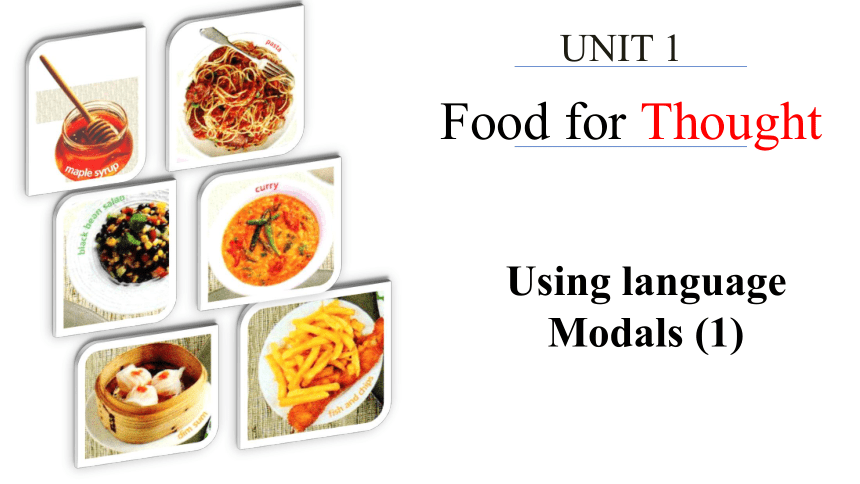 | |
| 格式 | pptx | ||
| 文件大小 | 7.0MB | ||
| 资源类型 | 教案 | ||
| 版本资源 | 外研版(2019) | ||
| 科目 | 英语 | ||
| 更新时间 | 2025-07-28 13:16:07 | ||
图片预览

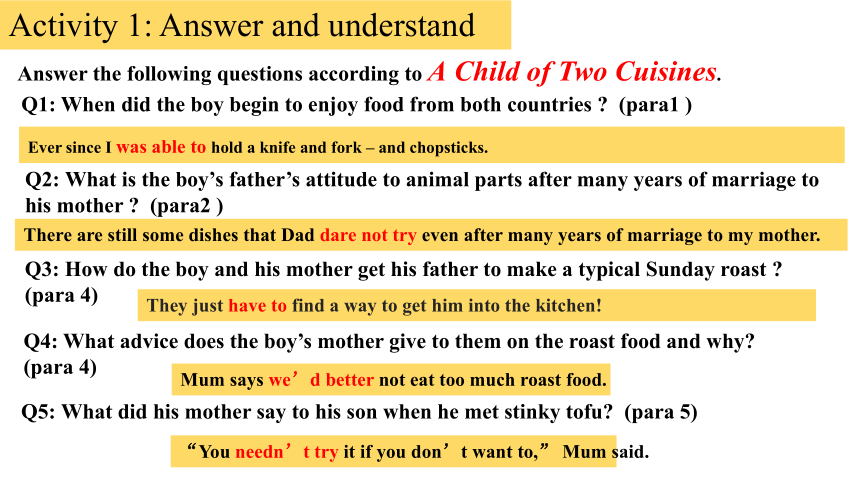
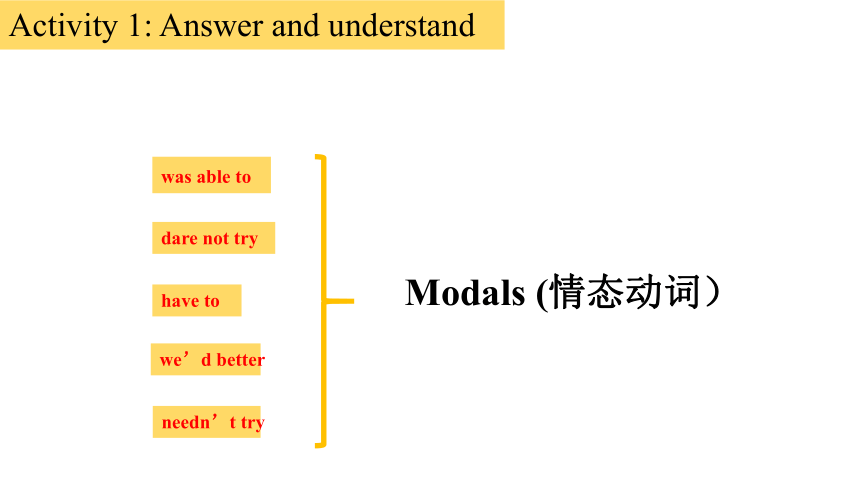
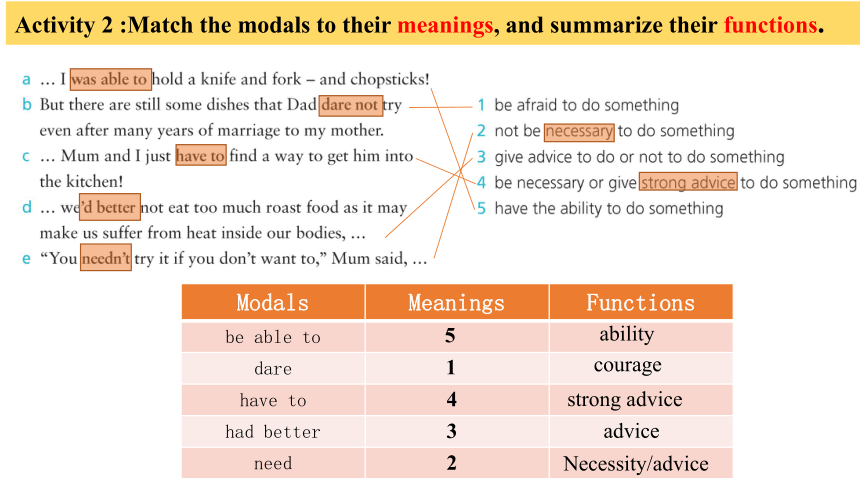
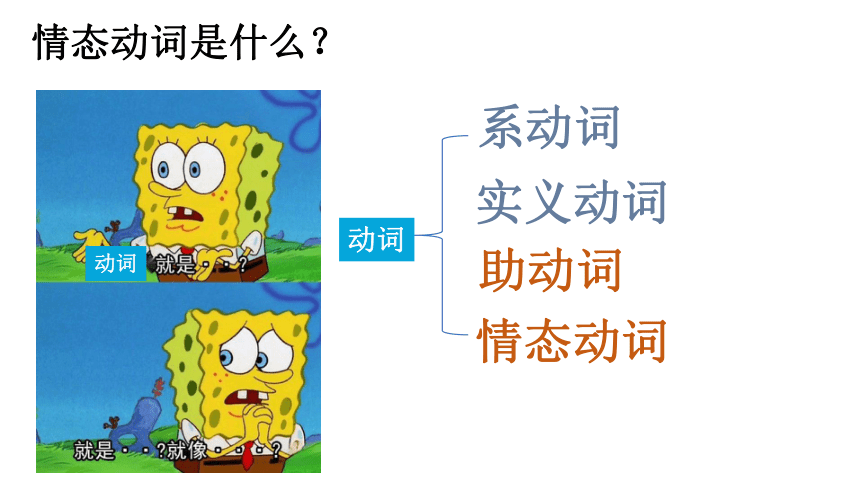

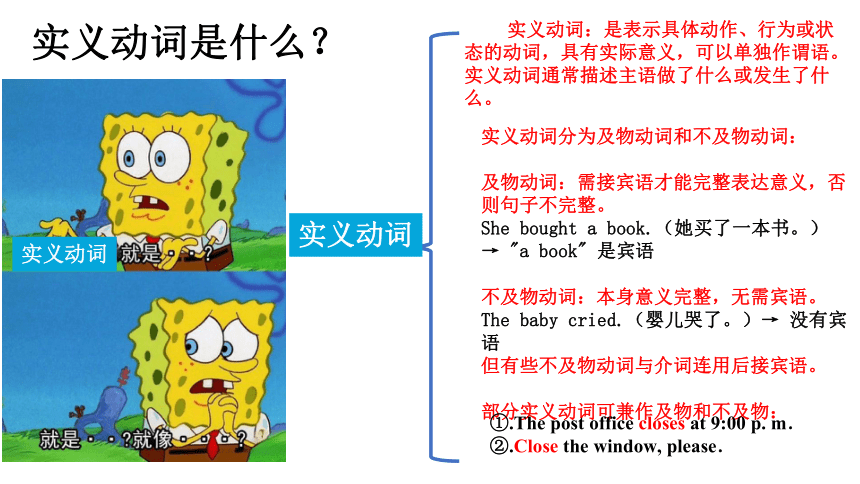
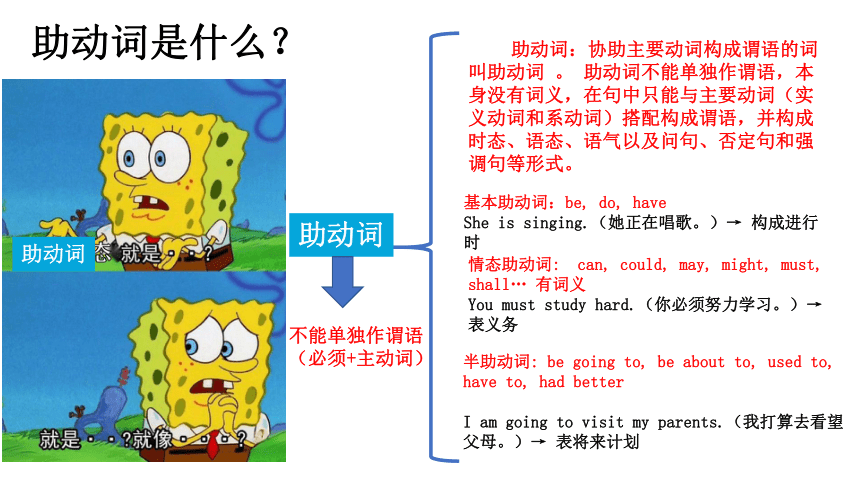
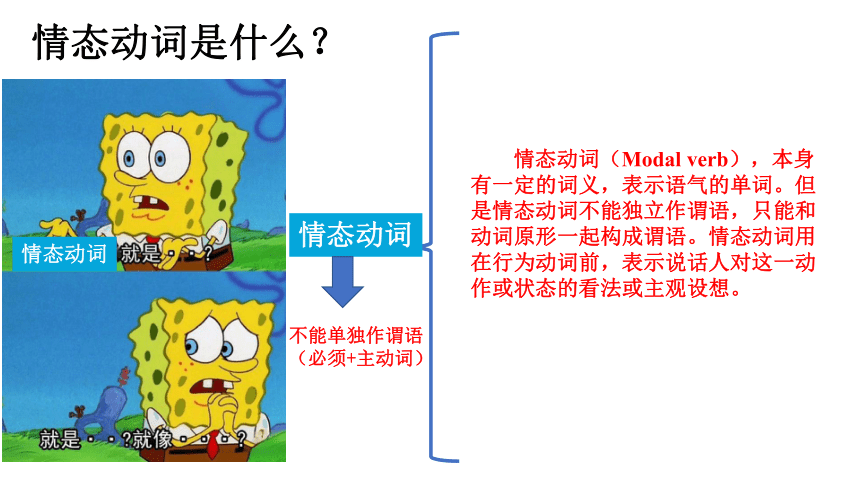
文档简介
(共25张PPT)
UNIT 1
Food for Thought
Using language
Modals (1)
Activity 1: Answer and understand
Answer the following questions according to A Child of Two Cuisines.
Q1: When did the boy begin to enjoy food from both countries (para1 )
Q2: What is the boy’s father’s attitude to animal parts after many years of marriage to his mother (para2 )
Q3: How do the boy and his mother get his father to make a typical Sunday roast (para 4)
Q4: What advice does the boy’s mother give to them on the roast food and why (para 4)
Q5: What did his mother say to his son when he met stinky tofu (para 5)
Ever since I was able to hold a knife and fork – and chopsticks.
There are still some dishes that Dad dare not try even after many years of marriage to my mother.
They just have to find a way to get him into the kitchen!
Mum says we’d better not eat too much roast food.
“You needn’t try it if you don’t want to,” Mum said.
Activity 1: Answer and understand
was able to
dare not try
have to
we’d better
needn’t try
Modals (情态动词)
Modals Meanings Functions
be able to
dare
have to
had better
need
Activity 2 :Match the modals to their meanings, and summarize their functions.
5
ability
courage
strong advice
advice
Necessity/advice
1
4
3
2
情态动词是什么?
系动词
情态动词
动词
动词
实义动词
助动词
系动词是什么?
系动词
系动词
系动词(Linking Verb)是一种用于连接主语和表语的动词,主要用来表示主语的状态、性质、特征或身份,而不是描述动作。常见的系动词有:表感官(feel,look,smell,sound,taste),表似乎(seem,appear),表变化词(get,become,turn,grow,make,come,go,fall,run),表保持(remain,keep,stay,continue,stand,rest,lie,hold)
Be 动词:
“Be”除了原形的“be”之外,还有另外七种形式:
am(第一人称单数形式),
is(第三人称单数形式),
are(第二人称单数和复数形式),
been(过去分词),
being,(现在分词),
was(第一人称与第三人称单数过去式),
were(第二人称单数和复数过去式).
实义动词是什么?
实义动词
实义动词
实义动词:是表示具体动作、行为或状态的动词,具有实际意义,可以单独作谓语。实义动词通常描述主语做了什么或发生了什么。
实义动词分为及物动词和不及物动词:
及物动词 :需接宾语才能完整表达意义,否则句子不完整。
She bought a book.(她买了一本书。)
→ "a book" 是宾语
不及物动词 :本身意义完整,无需宾语。
The baby cried.(婴儿哭了。)→ 没有宾语
但有些不及物动词与介词连用后接宾语。
部分实义动词可兼作及物和不及物:
①.The post office closes at 9:00 p. m.
②.Close the window, please.
助动词是什么?
助动词
助动词
助动词:协助主要动词构成谓语的词叫助动词 。 助动词不能单独作谓语,本身没有词义,在句中只能与主要动词(实义动词和系动词)搭配构成谓语,并构成时态、语态、语气以及问句、否定句和强调句等形式。
基本助动词:be, do, have
She is singing.(她正在唱歌。)→ 构成进行时
情态助动词: can, could, may, might, must, shall… 有词义
You must study hard.(你必须努力学习。)→ 表义务
半助动词: be going to, be about to, used to, have to, had better
I am going to visit my parents.(我打算去看望父母。)→ 表将来计划
不能单独作谓语
(必须+主动词)
情态动词是什么?
情态动词
情态动词
不能单独作谓语
(必须+主动词)
情态动词(Modal verb),本身有一定的词义,表示语气的单词。但是情态动词不能独立作谓语,只能和动词原形一起构成谓语。情态动词用在行为动词前,表示说话人对这一动作或状态的看法或主观设想。
情态动词(Modal verbs):表示说话人的某种语气或者情绪,如可能,意愿,猜测,义务,需要等。
1. 基本特征:
(1)情态动词不能单独做谓语,后面接动词原形;
She must go now.(正确) She must to go now.(错误,不加to)
(2)情态动词 没有人称和数的变化 (be able to,have to除外)
He can swim.
(3)其否定形式在后面直接加not
You can’t swim.(你不会游泳。)
情态动词:Modal verbs
情态动词的用法:be able to
be able to:
后接动词原形,表示某人做某事的能力,可用于大多数时态。用于过去时态时,还可以表示“某人过去或当时成功地做了某事”。例如:
a. I will be able to speak Japanese in another few months.
(再过几个月,我就能讲日语了。)
b. They were able to escape from the building when the fire broke out.
(火灾发生时,他们设法从那栋建筑里逃了出去。)
情态动词的用法:be able to
can(天生能力) vs. be able to(后天努力实现)
1.can只有现在时和过去时(could),而be able to则有更多的时态变化。
2.can一般指自身具有的能力,而be able to则表示经过一段时间的努力后所具有的能力,相当于manage to do或succeed in doing。
can 描述"常态能力"(泛泛而谈):
1.Dolphins can swim fast.(海豚天生游得快)
be able to 强调"具体实现"(尤其是经过努力后):
2.After 6 months of training, I was able to run a marathon.
(经过6个月训练,我终于能跑马拉松了→强调结果)
【即学即练】
选词填空 (can/be able to)
(1)He might fix your car.
(2)When I was young, I climb any tree in the woods.
(3)In today's information age, the loss of data cause serious problems
for a company.
(4)Father spent hours talking to him. At last he drop the silly idea.
be able to
could
can
was able to
情态动词的用法:dare
dare 作情态动词时,主要用于否定句、疑问句和条件从句中,一般不用在肯定句中。
例如:How dare you say I'm unfair (你怎么敢说我不公平?)
Dare you tell her the truth 你敢告诉她真相吗?
I daren't ask her this question.我不敢问她这个问题。
2. dare作实义动词,译为“敢于”,通常为“dare to do sth” (有人称与时态的变化)
否定式要在其前加don’t/doesn’t/didn’t。
She dares to go alone.她敢一个人去。
She doesn’t dare to go alone.
She didn’t dare to go alone.
情态动词的用法:need
need用作情态动词,表示“需要”(无时态与人称的变化)。仅用于否定句和疑问句. 否定式为need not/needn’t,意为“不必”。
Need I explain again (需要我再解释一遍吗?)
You needn't worry. (你不必担心。)
2. 以need 开头的疑问句,肯定回答用must, 否定回答可用needn’t。
以must 开头的一般疑问句,肯定回答用must,否定回答用needn’t 或don’t have to。
Need I finish the work today —Yes, you must /No, you needn’t
Must I ask for her permission — Yes, you must /No,you needn’t/don’t have to
情态动词的用法:need
3.need用作实义动词, (有时态与人称的变化)。
否定式和疑问式要借助助动词do/does/did。
need 作实义动词时常用于下列句式: need + to do / need + 名词
need doing = need to be done(表示被动意义)
Lily needs more money to pay for that book. (时态变化)
Lily needed more money to pay for that book at that time. (人称数的变化)
Lily doesn’t need any more money to pay for that book. (否定,添加助动词)
The car needs washing. = The car needs to be washed. (车需要洗了。)
情态动词的用法:have to
have to 的含义与must相似,两者往往可以互换使用,但have to 有各种时态,且强调客观需要(如规则、法律、外部压力等),意为 “不得不”。
must表示“必须”(侧重于主观意愿); mustn’t表示“禁止”。
You must be honest.(你必须诚实。)
You mustn't smoke here. (这里禁止吸烟。)
I have to leave because of the bad weather.
(因为天气不好,我不得不离开了。)
It’s dark now. I have to go home.
现在天黑了,我必须回家。
否定形式是don't have to,相当于needn't。
You don’t have to/needn't go if you don't want to.
如果你不想去,就不必去。
情态动词的用法:had better
had better:后接动词原形,意为“最好”,主要用来表示劝告或建议。用于现在时或将来时,可用于一切人称,没有任何词形变化。
其否定式是在其后加 not,疑问式是把 had 和 not 提前。
1. You'd better sit here and have a rest.(你最好坐在这儿休息一下。)
2. She had better not tell lies anymore.(她最好再也别撒谎了。)
3. Hadn't the doctor better see him (医生是不是去看看他比较好?)
Activity3:Underline the modals in the introduction to an app and talk about their meanings.
If you dare not try a “painful” diet to stay healthy, this new app is the perfect solution-and you needn't pay for it !The app works by quickly showing photos of different food. All you have to do is select the photos of healthy food. Then you'll be able to train your brain to select healthy food in real situations. So , if you're a sugar addict and aren't able to say no to chocolate or cola, you had better download it now!
be afraid to do something
not be necessary to do something
be necessary to do something
have the ability to do something
don't have the ability to do something
give advice to do something
If you dare not try a “painful” diet to stay healthy, this new app is the perfect solution-and you needn't pay for it !The app works by quickly showing photos of different food. All you have to do is select the photos of healthy food. Then you'll be able to train your brain to select healthy food in real situations. So , if you're a sugar addict and aren't able to say no to chocolate or cola, you had better download it now!
What is the short passage about
In what situation is the app perfect solution
How much will you pay for the app
What do you have to do if you use the app
How can you select healthy food in real situation
What advice can you get if you are a sugar addict
Do you want to download the app and why
Activity 3
have to
dare not
had better
needn’t / don’t have to
be able to
Complete the tips for good table manners with the correct forms of modals
Activity 4:
What is the passage about
Chinese table manners
Tips for good manners in China
You have to let the old start eating first!
Tips for good manners in China
Remain silent while eating 食不言
Don’t drum the table or your bowl with chopsticks.
别拿筷子敲桌子或者碗。
Don't stab your chopsticks into the rice.
别把筷子插到米饭上。
Don't point chopsticks towards anyone else while talking over a meal.用餐期间与人交谈, 不要用筷子指着别人
情态动词 含义 例句
Be able to 能够;有能力;有可能 I was able to fix the computer yesterday.
Can 能够;可以; She can speak 3 languages.
dare 情态动词:敢;胆敢 He dare not tell her the truth.
dare 实义动词:敢;敢于;挑战; I dare to swim across this river.
need 情态动词:需要;必须 You needn’t worry.
Need I say more
need 实义动词:需要;必须 She needs to finish her report tonight.
Have to 必须;不得不;被迫 I have to wear a uniform at work.
Had better 最好;应该 You'd better apologize to her.
Summary :
UNIT 1
Food for Thought
Using language
Modals (1)
Activity 1: Answer and understand
Answer the following questions according to A Child of Two Cuisines.
Q1: When did the boy begin to enjoy food from both countries (para1 )
Q2: What is the boy’s father’s attitude to animal parts after many years of marriage to his mother (para2 )
Q3: How do the boy and his mother get his father to make a typical Sunday roast (para 4)
Q4: What advice does the boy’s mother give to them on the roast food and why (para 4)
Q5: What did his mother say to his son when he met stinky tofu (para 5)
Ever since I was able to hold a knife and fork – and chopsticks.
There are still some dishes that Dad dare not try even after many years of marriage to my mother.
They just have to find a way to get him into the kitchen!
Mum says we’d better not eat too much roast food.
“You needn’t try it if you don’t want to,” Mum said.
Activity 1: Answer and understand
was able to
dare not try
have to
we’d better
needn’t try
Modals (情态动词)
Modals Meanings Functions
be able to
dare
have to
had better
need
Activity 2 :Match the modals to their meanings, and summarize their functions.
5
ability
courage
strong advice
advice
Necessity/advice
1
4
3
2
情态动词是什么?
系动词
情态动词
动词
动词
实义动词
助动词
系动词是什么?
系动词
系动词
系动词(Linking Verb)是一种用于连接主语和表语的动词,主要用来表示主语的状态、性质、特征或身份,而不是描述动作。常见的系动词有:表感官(feel,look,smell,sound,taste),表似乎(seem,appear),表变化词(get,become,turn,grow,make,come,go,fall,run),表保持(remain,keep,stay,continue,stand,rest,lie,hold)
Be 动词:
“Be”除了原形的“be”之外,还有另外七种形式:
am(第一人称单数形式),
is(第三人称单数形式),
are(第二人称单数和复数形式),
been(过去分词),
being,(现在分词),
was(第一人称与第三人称单数过去式),
were(第二人称单数和复数过去式).
实义动词是什么?
实义动词
实义动词
实义动词:是表示具体动作、行为或状态的动词,具有实际意义,可以单独作谓语。实义动词通常描述主语做了什么或发生了什么。
实义动词分为及物动词和不及物动词:
及物动词 :需接宾语才能完整表达意义,否则句子不完整。
She bought a book.(她买了一本书。)
→ "a book" 是宾语
不及物动词 :本身意义完整,无需宾语。
The baby cried.(婴儿哭了。)→ 没有宾语
但有些不及物动词与介词连用后接宾语。
部分实义动词可兼作及物和不及物:
①.The post office closes at 9:00 p. m.
②.Close the window, please.
助动词是什么?
助动词
助动词
助动词:协助主要动词构成谓语的词叫助动词 。 助动词不能单独作谓语,本身没有词义,在句中只能与主要动词(实义动词和系动词)搭配构成谓语,并构成时态、语态、语气以及问句、否定句和强调句等形式。
基本助动词:be, do, have
She is singing.(她正在唱歌。)→ 构成进行时
情态助动词: can, could, may, might, must, shall… 有词义
You must study hard.(你必须努力学习。)→ 表义务
半助动词: be going to, be about to, used to, have to, had better
I am going to visit my parents.(我打算去看望父母。)→ 表将来计划
不能单独作谓语
(必须+主动词)
情态动词是什么?
情态动词
情态动词
不能单独作谓语
(必须+主动词)
情态动词(Modal verb),本身有一定的词义,表示语气的单词。但是情态动词不能独立作谓语,只能和动词原形一起构成谓语。情态动词用在行为动词前,表示说话人对这一动作或状态的看法或主观设想。
情态动词(Modal verbs):表示说话人的某种语气或者情绪,如可能,意愿,猜测,义务,需要等。
1. 基本特征:
(1)情态动词不能单独做谓语,后面接动词原形;
She must go now.(正确) She must to go now.(错误,不加to)
(2)情态动词 没有人称和数的变化 (be able to,have to除外)
He can swim.
(3)其否定形式在后面直接加not
You can’t swim.(你不会游泳。)
情态动词:Modal verbs
情态动词的用法:be able to
be able to:
后接动词原形,表示某人做某事的能力,可用于大多数时态。用于过去时态时,还可以表示“某人过去或当时成功地做了某事”。例如:
a. I will be able to speak Japanese in another few months.
(再过几个月,我就能讲日语了。)
b. They were able to escape from the building when the fire broke out.
(火灾发生时,他们设法从那栋建筑里逃了出去。)
情态动词的用法:be able to
can(天生能力) vs. be able to(后天努力实现)
1.can只有现在时和过去时(could),而be able to则有更多的时态变化。
2.can一般指自身具有的能力,而be able to则表示经过一段时间的努力后所具有的能力,相当于manage to do或succeed in doing。
can 描述"常态能力"(泛泛而谈):
1.Dolphins can swim fast.(海豚天生游得快)
be able to 强调"具体实现"(尤其是经过努力后):
2.After 6 months of training, I was able to run a marathon.
(经过6个月训练,我终于能跑马拉松了→强调结果)
【即学即练】
选词填空 (can/be able to)
(1)He might fix your car.
(2)When I was young, I climb any tree in the woods.
(3)In today's information age, the loss of data cause serious problems
for a company.
(4)Father spent hours talking to him. At last he drop the silly idea.
be able to
could
can
was able to
情态动词的用法:dare
dare 作情态动词时,主要用于否定句、疑问句和条件从句中,一般不用在肯定句中。
例如:How dare you say I'm unfair (你怎么敢说我不公平?)
Dare you tell her the truth 你敢告诉她真相吗?
I daren't ask her this question.我不敢问她这个问题。
2. dare作实义动词,译为“敢于”,通常为“dare to do sth” (有人称与时态的变化)
否定式要在其前加don’t/doesn’t/didn’t。
She dares to go alone.她敢一个人去。
She doesn’t dare to go alone.
She didn’t dare to go alone.
情态动词的用法:need
need用作情态动词,表示“需要”(无时态与人称的变化)。仅用于否定句和疑问句. 否定式为need not/needn’t,意为“不必”。
Need I explain again (需要我再解释一遍吗?)
You needn't worry. (你不必担心。)
2. 以need 开头的疑问句,肯定回答用must, 否定回答可用needn’t。
以must 开头的一般疑问句,肯定回答用must,否定回答用needn’t 或don’t have to。
Need I finish the work today —Yes, you must /No, you needn’t
Must I ask for her permission — Yes, you must /No,you needn’t/don’t have to
情态动词的用法:need
3.need用作实义动词, (有时态与人称的变化)。
否定式和疑问式要借助助动词do/does/did。
need 作实义动词时常用于下列句式: need + to do / need + 名词
need doing = need to be done(表示被动意义)
Lily needs more money to pay for that book. (时态变化)
Lily needed more money to pay for that book at that time. (人称数的变化)
Lily doesn’t need any more money to pay for that book. (否定,添加助动词)
The car needs washing. = The car needs to be washed. (车需要洗了。)
情态动词的用法:have to
have to 的含义与must相似,两者往往可以互换使用,但have to 有各种时态,且强调客观需要(如规则、法律、外部压力等),意为 “不得不”。
must表示“必须”(侧重于主观意愿); mustn’t表示“禁止”。
You must be honest.(你必须诚实。)
You mustn't smoke here. (这里禁止吸烟。)
I have to leave because of the bad weather.
(因为天气不好,我不得不离开了。)
It’s dark now. I have to go home.
现在天黑了,我必须回家。
否定形式是don't have to,相当于needn't。
You don’t have to/needn't go if you don't want to.
如果你不想去,就不必去。
情态动词的用法:had better
had better:后接动词原形,意为“最好”,主要用来表示劝告或建议。用于现在时或将来时,可用于一切人称,没有任何词形变化。
其否定式是在其后加 not,疑问式是把 had 和 not 提前。
1. You'd better sit here and have a rest.(你最好坐在这儿休息一下。)
2. She had better not tell lies anymore.(她最好再也别撒谎了。)
3. Hadn't the doctor better see him (医生是不是去看看他比较好?)
Activity3:Underline the modals in the introduction to an app and talk about their meanings.
If you dare not try a “painful” diet to stay healthy, this new app is the perfect solution-and you needn't pay for it !The app works by quickly showing photos of different food. All you have to do is select the photos of healthy food. Then you'll be able to train your brain to select healthy food in real situations. So , if you're a sugar addict and aren't able to say no to chocolate or cola, you had better download it now!
be afraid to do something
not be necessary to do something
be necessary to do something
have the ability to do something
don't have the ability to do something
give advice to do something
If you dare not try a “painful” diet to stay healthy, this new app is the perfect solution-and you needn't pay for it !The app works by quickly showing photos of different food. All you have to do is select the photos of healthy food. Then you'll be able to train your brain to select healthy food in real situations. So , if you're a sugar addict and aren't able to say no to chocolate or cola, you had better download it now!
What is the short passage about
In what situation is the app perfect solution
How much will you pay for the app
What do you have to do if you use the app
How can you select healthy food in real situation
What advice can you get if you are a sugar addict
Do you want to download the app and why
Activity 3
have to
dare not
had better
needn’t / don’t have to
be able to
Complete the tips for good table manners with the correct forms of modals
Activity 4:
What is the passage about
Chinese table manners
Tips for good manners in China
You have to let the old start eating first!
Tips for good manners in China
Remain silent while eating 食不言
Don’t drum the table or your bowl with chopsticks.
别拿筷子敲桌子或者碗。
Don't stab your chopsticks into the rice.
别把筷子插到米饭上。
Don't point chopsticks towards anyone else while talking over a meal.用餐期间与人交谈, 不要用筷子指着别人
情态动词 含义 例句
Be able to 能够;有能力;有可能 I was able to fix the computer yesterday.
Can 能够;可以; She can speak 3 languages.
dare 情态动词:敢;胆敢 He dare not tell her the truth.
dare 实义动词:敢;敢于;挑战; I dare to swim across this river.
need 情态动词:需要;必须 You needn’t worry.
Need I say more
need 实义动词:需要;必须 She needs to finish her report tonight.
Have to 必须;不得不;被迫 I have to wear a uniform at work.
Had better 最好;应该 You'd better apologize to her.
Summary :
